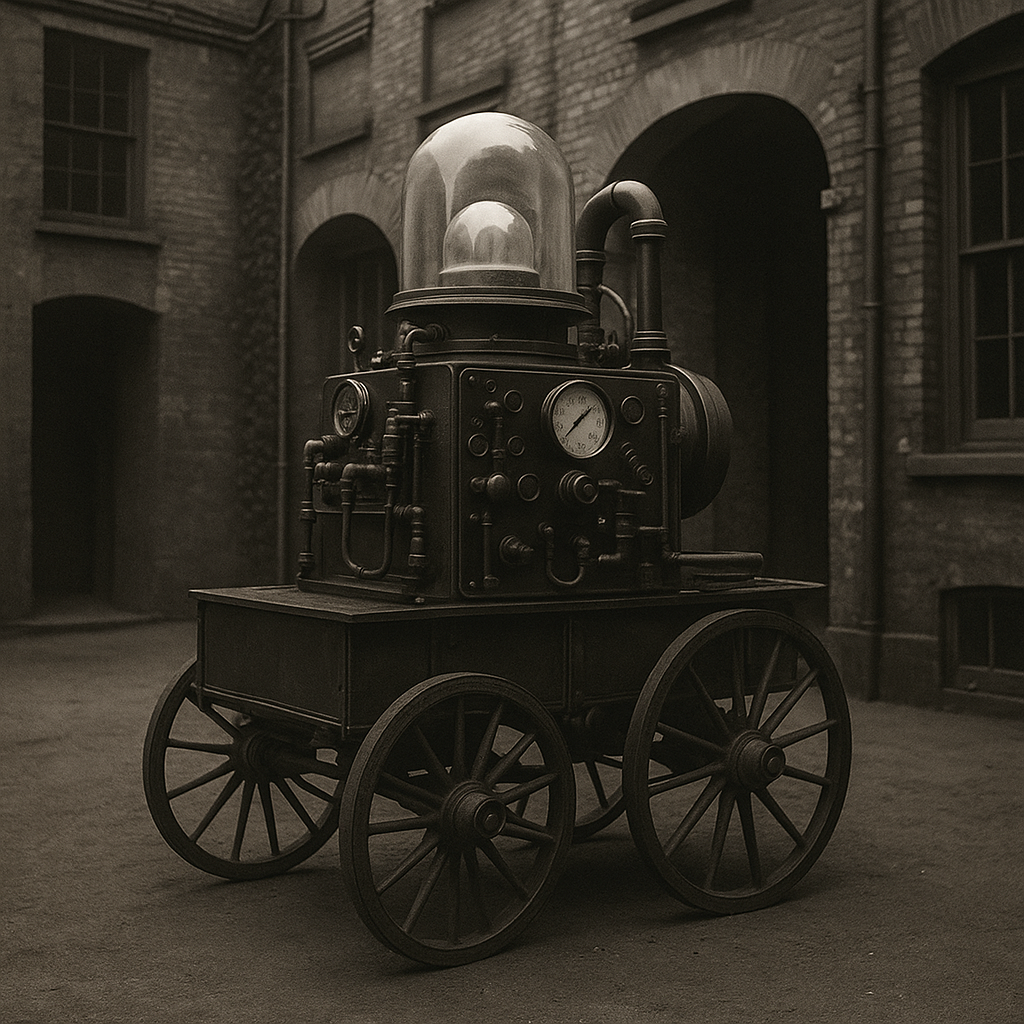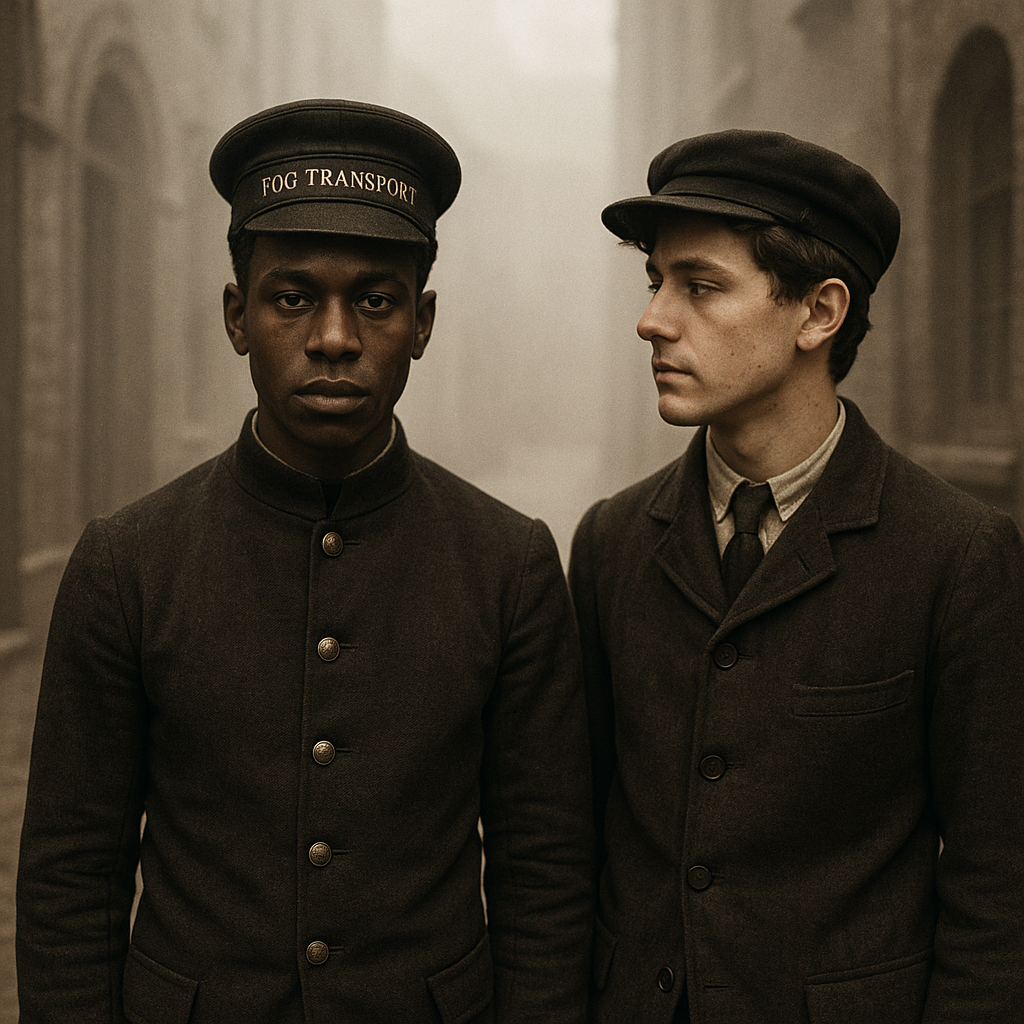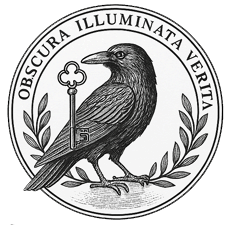SUBJECT: Fog Transport – Protocol Classification Echo/11-L
Prepared By: Internal Field Archivist Office, South Hall
Clearance: Level III – Archived Operational Access Only
Document Origin: Sub-Transit Mechanism Registry, Box Set VII-Glass
Status: Discontinued 1939 (Active Tag: OBSOLETE BUT UNSTABLE)
Summary Definition
Fog Transport was not a transportation system in the mechanical sense, but a non-linear, resonance-assisted field passage technique. It allowed small groups, individuals, or objects to be relocated within, beneath, or adjacent to StormCroft House under veil of fog — both natural and artificial — with no traceable route, conventional locomotion, or perceptual memory of transit.
Early documents refer to it as “passing without pattern” or “veiled conveyance.”
Origins and Early Development

The earliest known trial occurred in August 1874, when an atmospheric pressure collapse in the Croft Loop vault caused three servants to involuntarily vanish for 94 minutes. Upon reappearance — soaked in condensation but uninjured — they reported no sense of movement, only the sensation of “floating while standing still.” Finch took notice. Dart built a prototype “fog anchor” the next week.
By 1876, Wilber R. Dart and Octavius Wren had constructed three conductive fog corridors within StormCroft:
-
One leading from the eastern conservatory to the Bell Room sub-wing
-
Another spanning the unused wine cellars to the T-North railway intake
-
And a third, unnamed corridor referenced only in a sealed margin note: “only for exit, never return.”
Categories of Fog Transport

This sepia-toned archival photograph captures two attendants stationed in the East Passage near the fog corridor intake at StormCroft House. The image, dated autumn 1891, was recovered from the Sub-Transit Registry following the decommissioning of Fog Transport Protocols.
The attendant on the left, in partial uniform, looks directly into the camera, his posture composed but alert. He wears the identifiable Fog Transport insignia on his collar — a stitched looped circle above a copper-threaded band. The second, younger figure on the right turns slightly away, gaze averted, as though responding to an unseen presence within the corridor behind.
Personnel Identified: Name: Ashby Crane Position: Fog Transport Attendant (Senior), Bell Corridor Intake Born: 1864 – Tavistock Died: 1898 – internal containment breach (undisclosed wing) ,br />Notes: Known for stability under duress. Participated in 17 fog transports without incident. Authored marginal notes in the Resonance Cleanse Handbook. Name: Jory Fenlow Position: Fog Courier Trainee Born: 1876 – Crediton Presumed Died: 1893 – last logged near the Violet Corridor during unregistered trial Notes:
Displayed signs of echo-sensitivity. Repeated vivid descriptions of corridors that did not exist on any known map. Referred to by Dunbridge as “a silent weather vane.”
Type I – Passive Atmospheric Veil (PAV)
-
Dependent on natural fog conditions specific to Dartmoor’s terrain
-
Used for routine discreet transport of staff, guests, or objects too sensitive for visual tracing
-
Anchored by copper conductor rods installed at both departure and arrival points
-
Travellers were instructed to speak a personal sentence aloud just before entering; many chose prayers or memories
Reliability: 79%
Known Side Effects:
-
Partial memory inversion
-
Smell hallucinations (e.g., “smoke when there was none”)
-
Two subjects returned with bloodied palms despite no apparent injury
Type II – Induced Fog Displacement (IFD)
-
Required deployment of the Condensate Cradle, suspended over reinforced transit alcoves
-
Fog produced from a combination of rosemary oil, crushed chalk, copper vapour, ash, and one unspoken word
-
Activated when a designated “initiator” allowed their breathing to sync with the vibration of the room
Used for:
-
Emergency evacuations
-
Unregistered inbound guests
-
Transit of “volatile emotional figures” (see Edwin, March 1889)
Risk Level: High
Known Anomalies:
-
Watches reversing time
-
One servant reappeared with shirt buttons on the inside
-
Another, noted as “Passenger C”, aged five years overnight
Case File: Cleveland Breach Incident – March 1889
INTERNAL RECORD CODE: E-17/CVSTORM-1889
Fog Corridor Used: T-North Sub-Vault Line (normally decommissioned)
Event Summary:
Between 2:30 AM and 3:15 AM, under an enforced fog veil triggered by low-pressure alignment and human breath vector (unregistered), three youths entered the StormCroft sublevels via the T-North rail spur. They were not recorded in guest manifests. Their point of origin is unknown.
Witnessed Personnel:
-
Edwin (ED/71) – Observed kneeling in Gallery 3 corridor prior to corridor fill
-
Reuben Morris – Seen guiding the boys by hand through fog wall near Boiler Stair
-
Elias Dunbridge – Logged anomalous corridor echo signatures 22 minutes post-fog cessation
Incident Notes:
“They arrived by cart at 2:43AM under storm cover. No lanterns. No manifest. No memory slips filed.”
– Dunbridge, Margin Note (Box File 7H)
Key Details:
-
All three boys wore mismatched coats and bore ink marks across their left knuckles — likely code used by urban telegraph circuits.
-
Reuben Morris is believed to have initiated the fog deployment manually.
-
Edwin is reported to have collapsed 4 hours later in the conservatory.
Fog was sustained for 93 minutes beyond standard veil time. During that period:
-
The Bell Room stabilisers entered echo drift
-
Copper rails within the servant tunnel were described as “throbbing like breath”
-
One oil lantern exploded without flame
Upon reappearance, the boys were dazed, and refused to speak. They were returned to London within 12 hours using Fog Transport Type I. One was later found dead at the Paddington rail yard. His coat contained a pressed sprig of rosemary.
Warnings and Echo Notes
-
Memory Anchoring Failure: Two senior staff members, unrelated to the event, began repeating key phrases from the boys’ conversations a week later, despite no direct contact.
-
Tunnel Hum Phenomenon: T-North continues to hum every March 14th, even now.
-
Fog Echo Loop: Gallery 3 reports “childlike voices heard in reverse” whenever heavy fog passes the bell towers.
Legacy and Closure:
Fog Transport was quietly discontinued in 1939 following the disappearance of Archivist Levan Grey during a private test of the corridor behind Room 37. Three crates of material — one marked “crooked memory” — were never found.
Despite this, atmospheric disturbances linked to former fog corridors still register on Whisper Logs. No modern replication effort (including under CroftNet) succeeded.
Final known mention of Fog Transport in StormCroft archives:
“We forgot the path. It has not forgotten us.”
